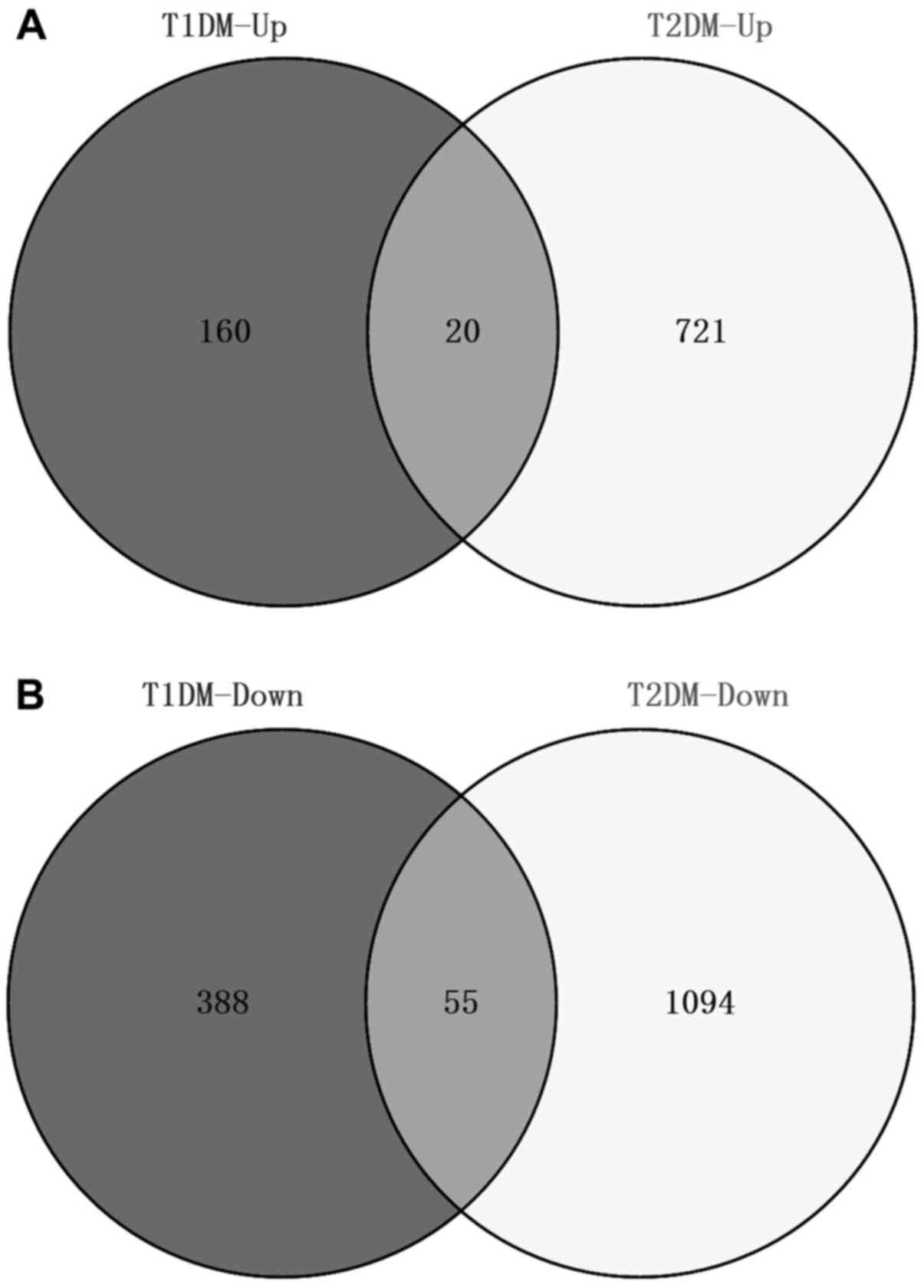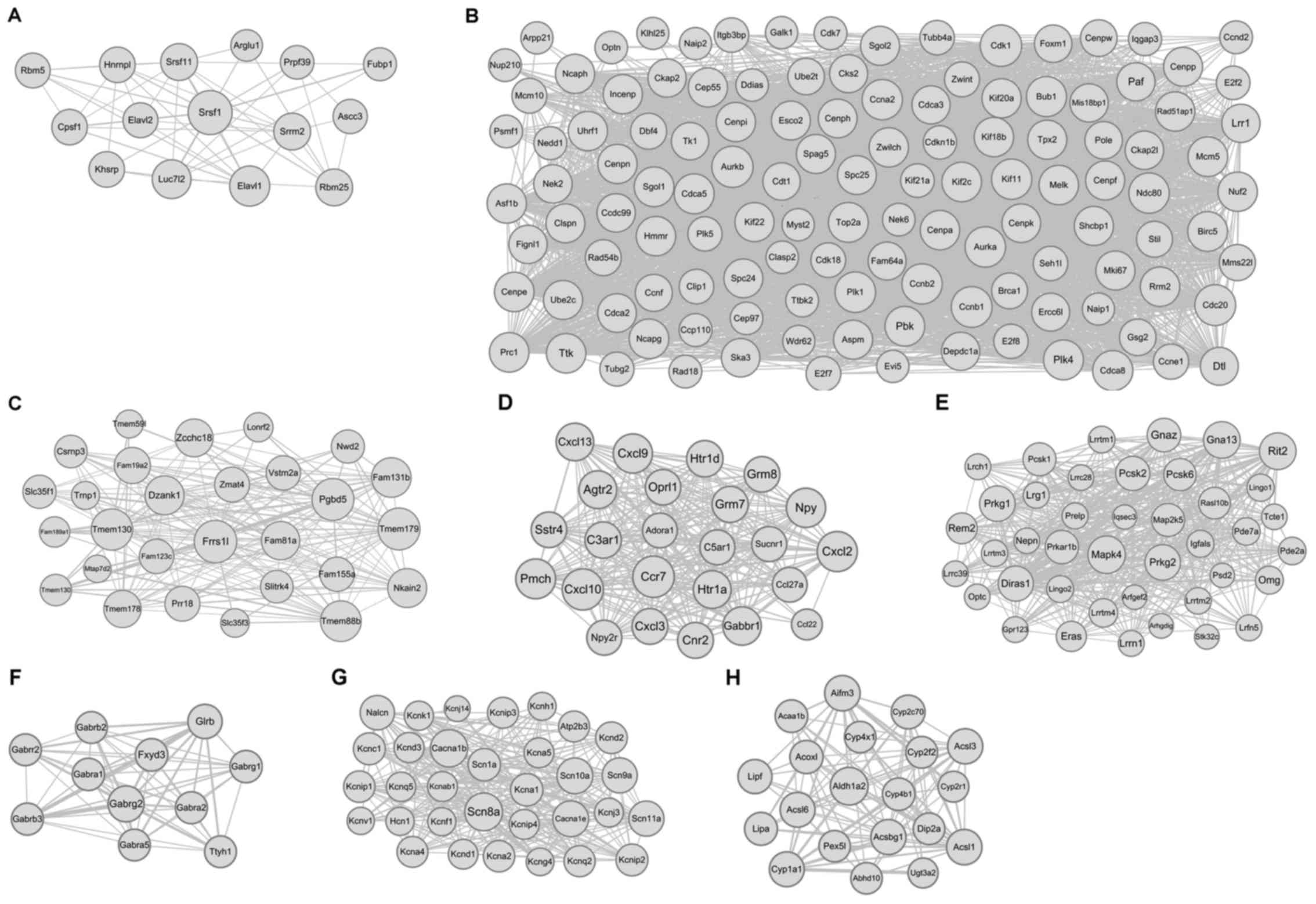|
1
|
Vincent AM, Callaghan BC, Smith AL and
Feldman EL: Diabetic neuropathy: Cellular mechanisms as therapeutic
targets. Nat Rev Neurol. 7:573–583. 2011. View Article : Google Scholar : PubMed/NCBI
|
|
2
|
Tesfaye S and Selvarajah D: Advances in
the epidemiology, pathogenesis and management of diabetic
peripheral neuropathy. Diabetes Metab Res Rev. 28 Suppl 1:8–14.
2012. View Article : Google Scholar : PubMed/NCBI
|
|
3
|
Premkumar LS and Pabbidi RM: Diabetic
peripheral neuropathy: Role of reactive oxygen and nitrogen
species. Cell Biochem Biophys. 67:373–383. 2013. View Article : Google Scholar : PubMed/NCBI
|
|
4
|
Levitt NS, Stansberry KB, Wynchank S and
Vinik AI: The natural progression of autonomic neuropathy and
autonomic function tests in a cohort of people with IDDM. Diabetes
Care. 19:751–754. 1996. View Article : Google Scholar : PubMed/NCBI
|
|
5
|
Rathmann W, Ziegler D, Jahnke M, Haastert
B and Gries FA: Mortality in diabetic patients with cardiovascular
autonomic neuropathy. Diabet Med. 10:820–824. 1993. View Article : Google Scholar : PubMed/NCBI
|
|
6
|
OBrien PD, Sakowski SA and Feldman EL:
Mouse models of diabetic neuropathy. ILAR J. 54:259–272. 2014.
View Article : Google Scholar : PubMed/NCBI
|
|
7
|
Callaghan BC, Hur J and Feldman EL:
Diabetic neuropathy: One disease or two? Curr Opin Neurol.
25:536–541. 2012. View Article : Google Scholar : PubMed/NCBI
|
|
8
|
Sima AA and Kamiya H: Diabetic neuropathy
differs in type 1 and type 2 diabetes. Ann NY Acad Sci.
1084:235–249. 2006. View Article : Google Scholar : PubMed/NCBI
|
|
9
|
Kamiya H, Murakawa Y, Zhang W and Sima AA:
Unmyelinated fiber sensory neuropathy differs in type 1 and type 2
diabetes. Diabetes Metab Res Rev. 21:448–458. 2005. View Article : Google Scholar : PubMed/NCBI
|
|
10
|
Stevens MJ, Zhang W, Li F and Sima AA:
C-peptide corrects endoneurial blood flow but not oxidative stress
in type 1 BB/Wor rats. Am J Physiol Endocrinol Metab.
287:E497–E505. 2004. View Article : Google Scholar : PubMed/NCBI
|
|
11
|
Qu W, Han C, Li M, Zhang J and Li L:
Revealing the underlying mechanism of diabetic nephropathy viewed
by microarray analysis. Exp Clin Endocrinol Diabetes. 123:353–359.
2015. View Article : Google Scholar : PubMed/NCBI
|
|
12
|
He K, Lv W, Zhang Q, Wang Y, Tao L and Liu
D: Gene set enrichment analysis of pathways and transcription
factors associated with diabetic retinopathy using a microarray
dataset. Int J Mol Med. 36:103–112. 2015. View Article : Google Scholar : PubMed/NCBI
|
|
13
|
Lacroix-Fralish ML, Tawfik VL, Tanga FY,
Spratt KF and DeLeo JA: Differential spinal cord gene expression in
rodent models of radicular and neuropathic pain. Anesthesiology.
104:1283–1292. 2006. View Article : Google Scholar : PubMed/NCBI
|
|
14
|
Zhang L, Qu S, Liang A, Jiang H and Wang
H: Gene expression microarray analysis of the sciatic nerve of mice
with diabetic neuropathy. Int J Mol Med. 35:333–339. 2015.
View Article : Google Scholar : PubMed/NCBI
|
|
15
|
Wiggin TD, Kretzler M, Pennathur S,
Sullivan KA, Brosius FC and Feldman EL: Rosiglitazone treatment
reduces diabetic neuropathy in streptozotocin-treated DBA/2J mice.
Endocrinology. 149:4928–4937. 2008. View Article : Google Scholar : PubMed/NCBI
|
|
16
|
Pande M, Hur J, Hong Y, Backus C, Hayes
JM, Oh SS, Kretzler M and Feldman EL: Transcriptional profiling of
diabetic neuropathy in the BKS db/db mouse: A model of type 2
diabetes. Diabetes. 60:1981–1989. 2011. View Article : Google Scholar : PubMed/NCBI
|
|
17
|
Simon R, Lam A, Li MC, Ngan M, Menenzes S
and Zhao Y: Analysis of gene expression data using BRB-ArrayTools.
Cancer Inform. 3:11–17. 2007. View Article : Google Scholar : PubMed/NCBI
|
|
18
|
Huang W, Sherman BT and Lempicki RA:
Systematic and integrative analysis of large gene lists using DAVID
bioinformatics resources. Nat Protoc. 4:44–57. 2009. View Article : Google Scholar : PubMed/NCBI
|
|
19
|
Huang W, Sherman BT and Lempicki RA:
Bioinformatics enrichment tools: Paths toward the comprehensive
functional analysis of large gene lists. Nucleic Acids Res.
37:1–13. 2009. View Article : Google Scholar : PubMed/NCBI
|
|
20
|
Wang J, Ma SH, Tao R, Xia LJ, Liu L and
Jiang YH: Gene expression profile changes in rat dorsal horn after
sciatic nerve injury. Neurol Res. 39:176–182. 2017. View Article : Google Scholar : PubMed/NCBI
|
|
21
|
Yang YL, Xiang RL, Yang C, Liu XJ, Shen
WJ, Zuo J, Chang YS and Fang FD: Gene expression profile of human
skeletal muscle and adipose tissue of Chinese Han patients with
type 2 diabetes mellitus. Biomed Environ Sci. 22:359–368.
View Article : Google Scholar : PubMed/NCBI
|
|
22
|
Sun J, Wang D and Jin T: Insulin alters
the expression of components of the Wnt signaling pathway including
TCF-4 in the intestinal cells. Biochim Biophys Acta. 1800:344–351.
2010. View Article : Google Scholar : PubMed/NCBI
|
|
23
|
Matsumoto K and Yokoyama S: Gene
expression analysis on the liver of cholestyramine-treated type 2
diabetic model mice. Biomed Pharmacother. 64:373–378. View Article : Google Scholar : PubMed/NCBI
|
|
24
|
Abdul-Rahman O, Sasvari-Szekely M, Ver A,
Rosta K, Szasz BK, Kereszturi E and Keszler G: Altered gene
expression profiles in the hippocampus and prefrontal cortex of
type 2 diabetic rats. BMC Genomics. 13:812012. View Article : Google Scholar : PubMed/NCBI
|
|
25
|
Mounier C and Posner BI: Transcriptional
regulation by insulin: From the receptor to the gene. Can J Physiol
Pharmacol. 84:713–724. 2006. View
Article : Google Scholar : PubMed/NCBI
|
|
26
|
Schuelert N, Gorodetskaya N, Just S, Doods
H and Corradini L: Electrophysiological characterization of spinal
neurons in different models of diabetes type 1- and type 2-induced
neuropathy in rats. Neuroscience. 291:146–154. 2015. View Article : Google Scholar : PubMed/NCBI
|
|
27
|
Echeverry S, Shi XQ and Zhang J:
Characterization of cell proliferation in rat spinal cord following
peripheral nerve injury and the relationship with neuropathic pain.
Pain. 135:37–47. 2008. View Article : Google Scholar : PubMed/NCBI
|
|
28
|
Sun C, Zhang J, Chen L, Liu T, Xu G, Li C,
Yuan W, Xu H and Su Z: IL-17 contributed to the neuropathic pain
following peripheral nerve injury by promoting astrocyte
proliferation and secretion of proinflammatory cytokines. Mol Med
Rep. 15:89–96. 2017. View Article : Google Scholar : PubMed/NCBI
|
|
29
|
Guzen FP, de Almeida Leme RJ, de Andrade
MS, de Luca BA and Chadi G: Glial cell line-derived neurotrophic
factor added to a sciatic nerve fragment grafted in a spinal cord
gap ameliorates motor impairments in rats and increases local
axonal growth. Restor Neurol Neurosci. 27:1–16. 2009.PubMed/NCBI
|
|
30
|
Chang-Chen KJ, Mullur R and
Bernal-Mizrachi E: Beta-cell failure as a complication of diabetes.
Rev Endocr Metab Disord. 9:329–343. 2008. View Article : Google Scholar : PubMed/NCBI
|
|
31
|
Kim B, McLean LL, Philip SS and Feldman
EL: Hyperinsulinemia induces insulin resistance in dorsal root
ganglion neurons. Endocrinology. 152:3638–3647. 2011. View Article : Google Scholar : PubMed/NCBI
|
|
32
|
Bian O, Zhang H, Guan Q, Sun Y and Zeng D:
High-dose insulin inhibits gap junction intercellular communication
in vascular smooth muscle cells. Mol Med Rep. 12:331–336. 2015.
View Article : Google Scholar : PubMed/NCBI
|
|
33
|
Takenaka T, Inoue T, Okada H, Ohno Y,
Miyazaki T, Chaston DJ, Hill CE and Suzuki H: Altered gap
junctional communication and renal haemodynamics in Zucker fatty
rat model of type 2 diabetes. Diabetologia. 54:2192–2201. 2011.
View Article : Google Scholar : PubMed/NCBI
|
|
34
|
Ly LD, Xu S, Choi SK, Ha CM, Thoudam T,
Cha SK, Wiederkehr A, Wollheim CB, Lee IK and Park KS: Oxidative
stress and calcium dysregulation by palmitate in type 2 diabetes.
Exp Mol Med. 49:e2912017. View Article : Google Scholar : PubMed/NCBI
|
|
35
|
Sano T, Iwashita M, Nagayasu S, Yamashita
A, Shinjo T, Hashikata A, Asano T, Kushiyama A, Ishimaru N,
Takahama Y, et al: Protection from diet-induced obesity and insulin
resistance in mice lacking CCL19-CCR7 signaling. Obesity (Silver
Spring). 23:1460–1471. 2015. View Article : Google Scholar : PubMed/NCBI
|











